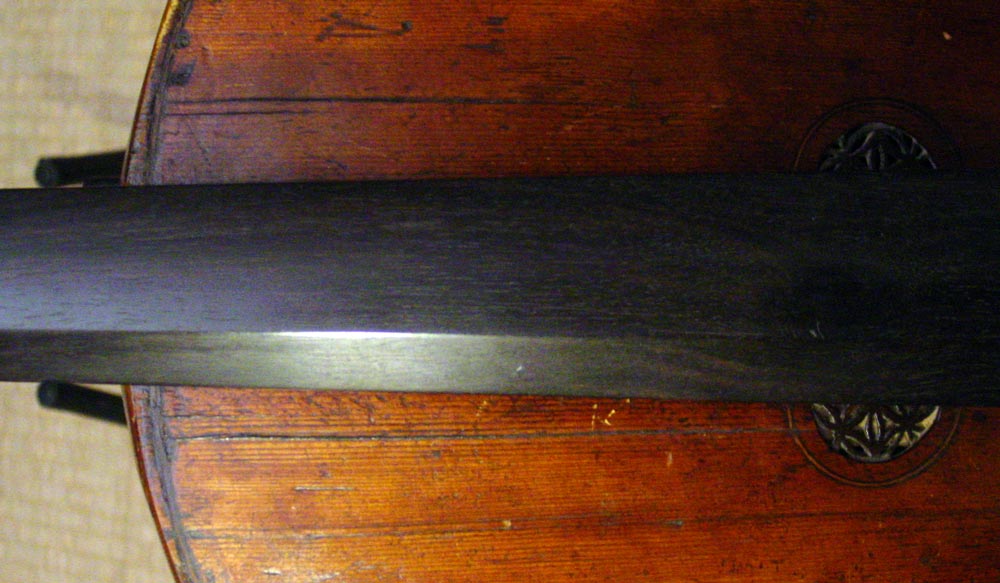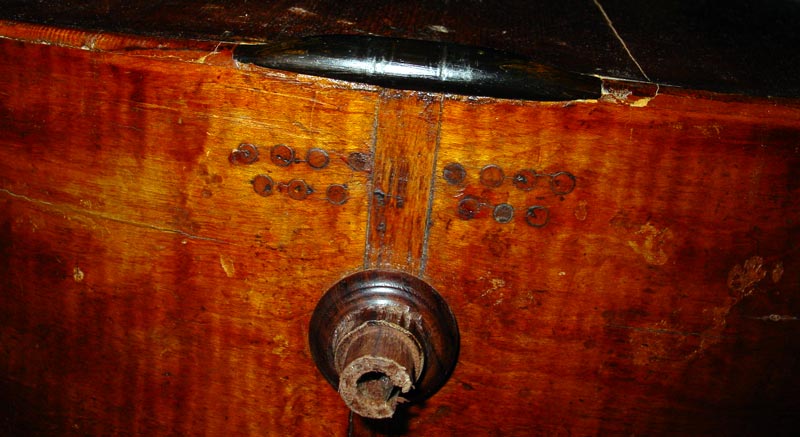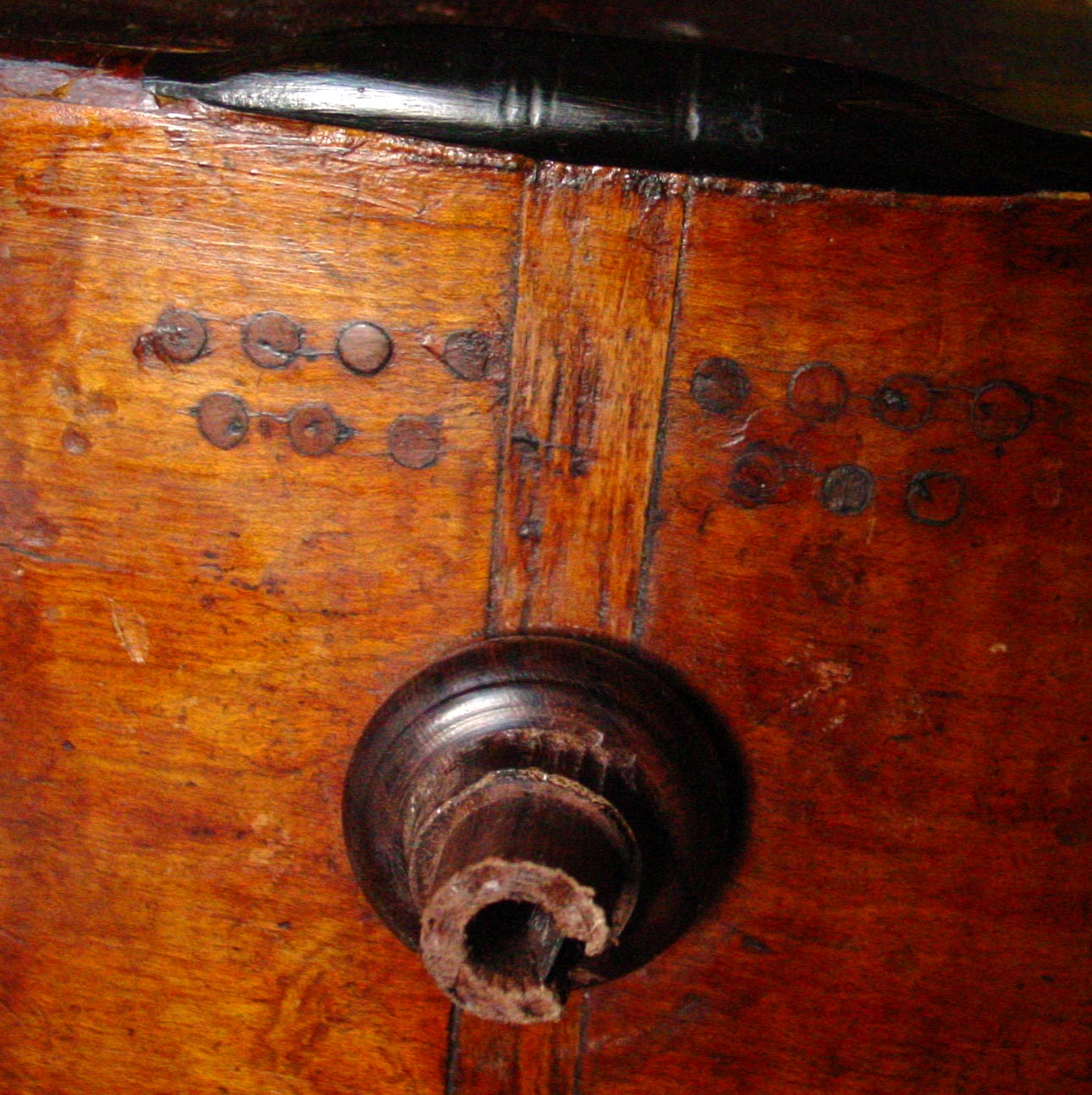Baryton
18th C.
(Provisional photos: recent acquisition)
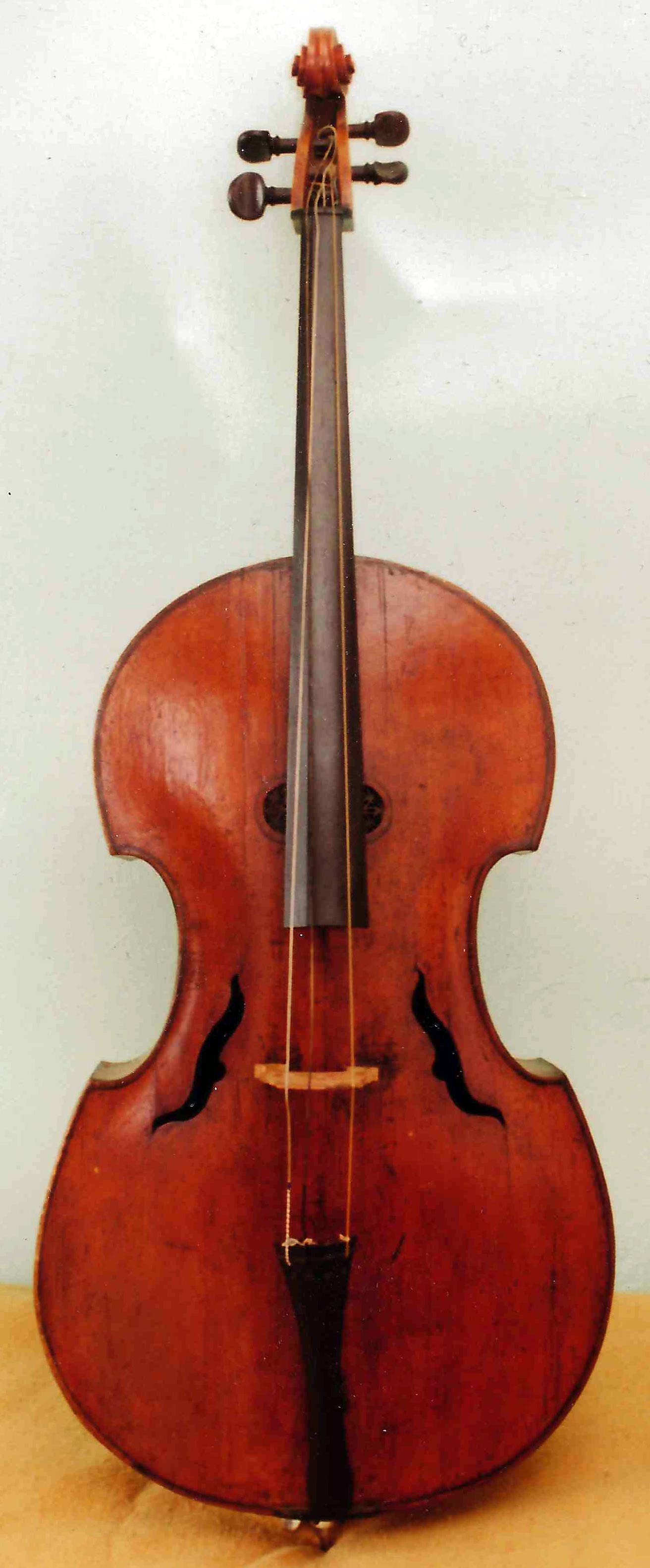
| This instrument, though now a violoncello, was originally a baryton, with 6 bowed and 14 sympathetic strings. Its discovery constitutes a highly significant and exiting event, as there are very, very few original barytons in the world and most of these are regretably in unrestored form harboured in museums behind glass, in the best of cases, or in storage, in the worst. The instrument will be restored to its original condition and will be used for our future recordings of the works by Haydn, Lidl and others. Dendrochronology will be carried out as soon as possible. Although this barytone bears certain constructional features pointing towards Italy, it may indeed come from a northern neighbor. |

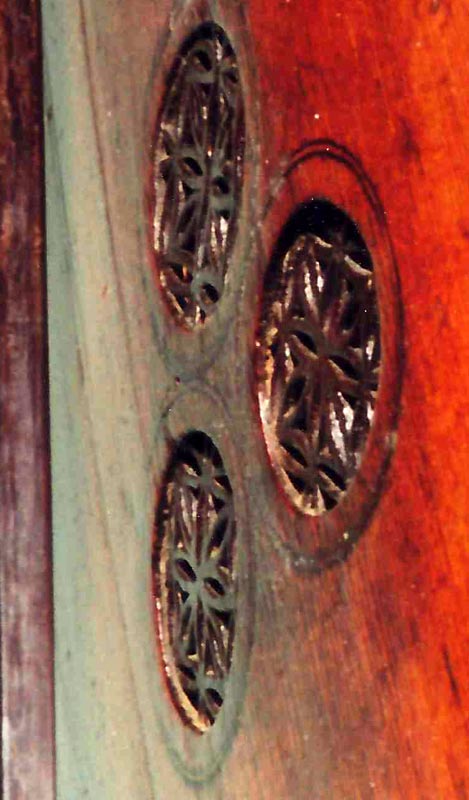
|
Closer view of the beautiful rosettes which adorn the center of the upper part of the belly.
|
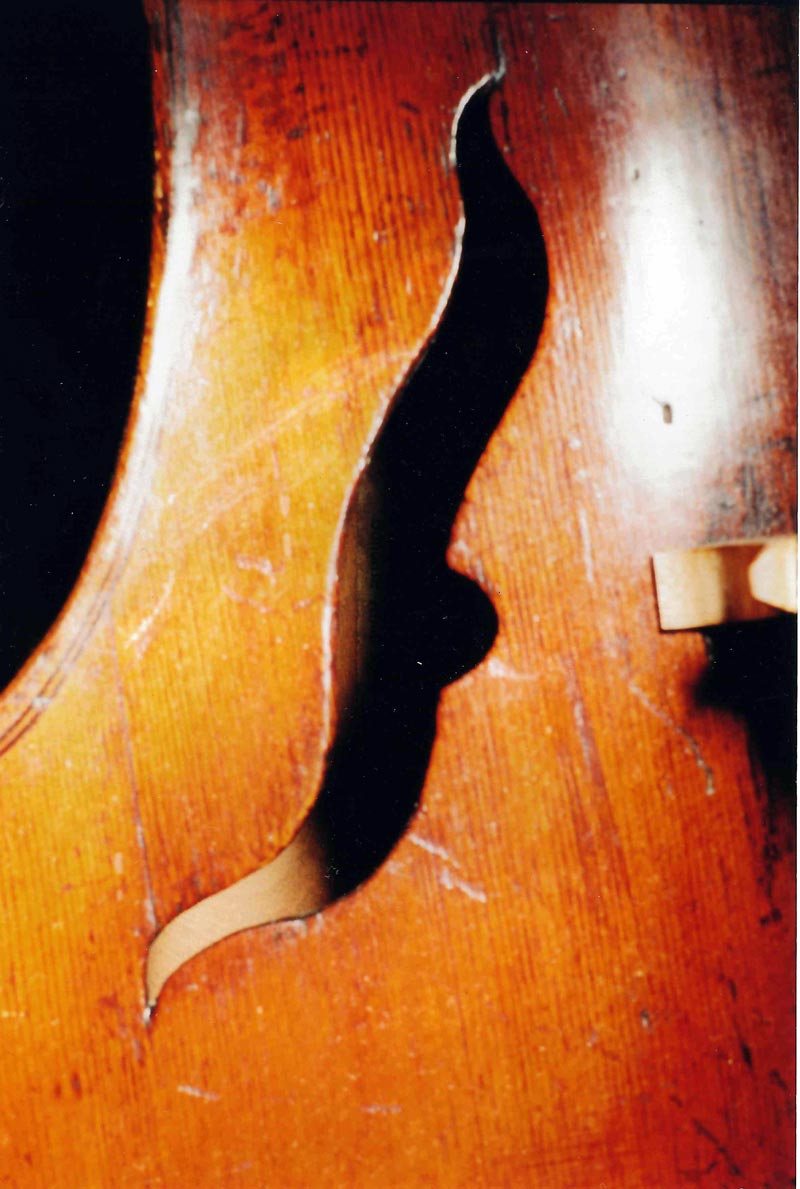
The sound holes are in the shape of a flame.
Shadow on the belly along both sides of the present fingerboard, giving an indication of the width of the original fingerboard.
The fourteen holes for the pins on which the sympathetic strings were attached were filled in with wooden plugs when the instrument was transformed into a cello. Notice also at the center of the lower ribs the evidence of the former stock for the attachment of the tailpiece, as was common in the set-up of contemporary violas da gamba. This was later replaced with the hole for the endpin and the round button, for the attachment of the loop of the modern tailpiece.
| Body length | 728 cm |
| Upper width | 353 |
| Middle width | 225 |
| Lower width | 438 |
| Rib height | 120 |
| String length |
updated
